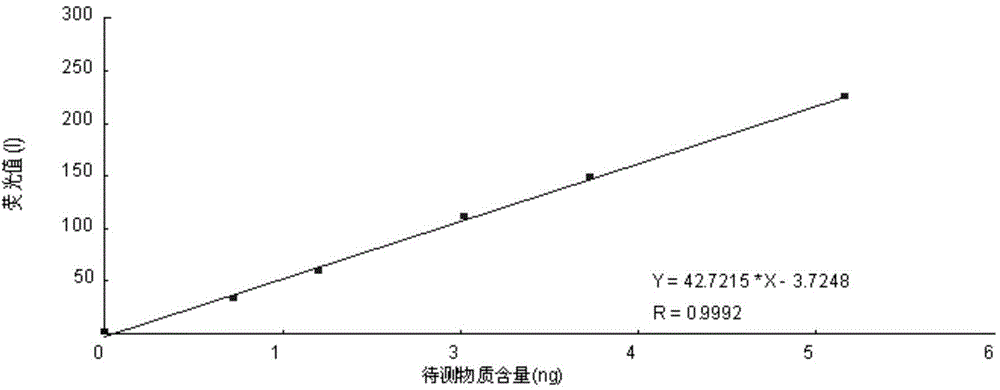Method for rapidly determining lead in food
A rapid detection and food technology, applied in the direction of material excitation analysis, fluorescence/phosphorescence, etc., can solve the problems of lead-free rapid detection method standards, etc., and achieve the effect of making up for the long cycle of detection results, compensating for the distortion of detection data, and avoiding pollution
- Summary
- Abstract
- Description
- Claims
- Application Information
AI Technical Summary
Problems solved by technology
Method used
Image
Examples
Embodiment 1
[0032] Example 1: Determination of lead (Pb) in wheat flour:
[0033] A method for rapid determination of lead in food, including: 1) selected instruments and equipment, 2) preparation of standard curve, 3) test steps, 4) instrument conditions used in the experiment, 5) calculation and expression of results;
[0034] 1) Instruments and equipment: Direct sample introduction and lead measurement device: DAA-5300 (Direct Arsenic Analyzer) and atomic fluorescence spectrometer (AFS) combined system:
[0035] (1) Direct sample introduction and lead measurement device (model DAA-5300): equipped with a quartz sample boat, two tube furnaces, two electrothermal quartz tubes, and 4 gas control systems;
[0036] (2) AFS (model 8230) part: equipped with photomultiplier tube (PMT) negative high voltage, lead hollow cathode lamp, detector, gas circuit control system;
[0037] (3) Mixed gas of hydrogen and argon (15%+85%).
[0038] 2) Preparation of standard curve: Use lead single element solution stand...
Embodiment 2
[0060] Example 2: Determination of Pb in tea:
[0061] Mix the tea standard substance (GBW10016) and alumina 1:10 evenly, weigh about 15.0mg into the quartz sample boat, set the lead meter and the atomic fluorescence (AFS) combined instrument to determine the lead value; other conditions are all Same with wheat, the determination result of the recovery rate of tea standard material (see Table 3).
[0062] Table 3. Measurement results of Pb recovery rate in tea reference materials
[0063]
[0064] It can be seen from Table 3 that the recovery rate of Pb in the tea standard material is 97.33-108.0%, and the recovery effect is ideal, which meets the requirements of the testing standards.
Embodiment 3
[0065] Example 3: Determination of Pb in mussels:
[0066] Mix the mussel standard substance (GBW08571) with alumina 1:10 evenly, weigh about 15.0mg into the quartz sample boat, set the lead meter and atomic fluorescence (AFS) combined meter to determine the lead value; other conditions Both are the same as those of wheat, and the measurement results of the recovery rate of the mussel reference material (see Table 4).
[0067] Table 4. Measurement results of Pb recovery rate in mussel reference materials
[0068]
[0069] It can be seen from Table 4 that the recovery rate of Pb in the mussel standard material is 95.92-107.1%, and the recovery effect is ideal.
PUM
 Login to View More
Login to View More Abstract
Description
Claims
Application Information
 Login to View More
Login to View More - R&D
- Intellectual Property
- Life Sciences
- Materials
- Tech Scout
- Unparalleled Data Quality
- Higher Quality Content
- 60% Fewer Hallucinations
Browse by: Latest US Patents, China's latest patents, Technical Efficacy Thesaurus, Application Domain, Technology Topic, Popular Technical Reports.
© 2025 PatSnap. All rights reserved.Legal|Privacy policy|Modern Slavery Act Transparency Statement|Sitemap|About US| Contact US: help@patsnap.com



